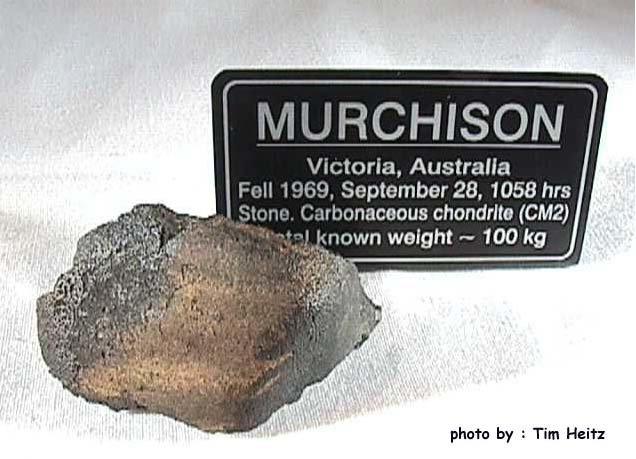
I happened to watch Catalyst last night (the program was titled Asteroid Hunters) and was slightly blown away by two things.
- Micrometeorites, as small as the width of a human hair, can be extracted from rocks 2.7 billion years old and tell us about the composition of earth’s atmosphere at that time.
- The meteorite that landed 50 years ago at Murchison, Victoria, contains volatile organic compounds — sugars, amino acids — and they still release odours. Have them land in an environment like Rotarua’s steamy, gaseous horror-scape and they could form membranes, the skin of soapy like bubbles, that were the necessary precondition to forming cells from which life evolved.
Fascinating. Well, I think so, anyway.
But I missed the film’s explanation of what the organic compounds had to do with the asteroids containing elements in their original primordial state while on earth the heavier elements have had time (from when the earth was molten) to sink to the centre and leave the lighter stuff in the crust. Are those organic compounds made from heavier elements? Anyone know?
For the video and transcript: https://www.abc.net.au/catalyst/s21-e04-asteroid-hunters/12198186?jwsource=cl

If you enjoyed this post, please consider donating to Vridar. Thanks!

Fascinating indeed. Thanks for sharing.
What a great show! I learned so much! Thank you for allowing us to view.
What I get is that the asteroids having elements in the primordial state isn’t related to the organics. That heavier elements on Earth had sunk toward the core was explanation for meteorites not looking like rocks found on Earth.
FWIW, heavier elements aren’t much found in biologic molecules. Most biological molecules on the planet are 99% (by mass) CHNOPS – carbon, hydrogen, nitrogen, oxygen, phosphorus, and sulfur. The heaviest of those is sulfur with atomic number 16. Almost the entire remaining one percent of heavier elements necessary for life are potassium, sulfur, sodium, chlorine, and magnesium are. The additional dozen or so elements though to be essential for life are present in teeny tiny trace amounts. The heaviest of those I can think of offhand – it’s been over 40 years since I studied biology and chemistry so this ain’t gospel – is Iodine.
Most heavier elements are biologic toxins. Hence “heavy metal poisoning” and “lead poisoning” and “mercury poisoning.”
Appreciated. All of these things were much simpler when I was an amateur astronomer in my late teens. Even the distinction and meanings of “meteor” and “meteorite” seem to have been modified since those days.